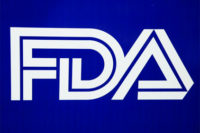The American Heart Association now recommends all Americans cut their salt intake to no more than 1,500 mg per day.

The American Heart Association (AHA) has revised its recommended upper limit for salt intake from 2,300 to 1,500 mg per day for the general population. The lower number had been the recommended maximum salt intake for patients with high blood pressure and heart disease.
Increased salt produces elevated blood pressure and increases the risk of stroke, heart attack and kidney disease. Elevated blood pressure is a major public health problem-approximately 90 percent of all Americans will develop hypertension over their lifetime, according to AHA.
According to the Center for Science in the Public Interest (CSPI), the average American adult consumes 4,000 mg of salt per day. “Without question, the amounts of salt used in packaged and restaurant foods make it the deadliest ingredient in the food supply,” says Michael Jacobson, CSPI executive director. Jacobson would like to see the new edition of the Dietary Guidelines for Americans list salt with a 1,500 mg target instead of the current figure of 2,300-mg.
